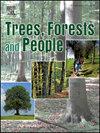Participatory forest management: Analysis of local forest governance and implications for REDD+ implementation in the Adaba-Dodola Forest in Ethiopia
IF 2.7
Q1 FORESTRY
引用次数: 0
Abstract
Currently, sustainable forest management (SFM) issue has received global attention because of the importance of forests for achieving socioeconomic and environmental goals. Participatory Forest Management (PFM) has been implemented in Ethiopia as a national programme to improve the Forest governance (FG) system. This paper analyses the current FG settings and identifies major gaps in forest conservation by assessing the local FG situation. The primary data were collected through key informant interviews (54) and four focus group discussions with the community and experts. Semi-structured questionnaires were used as a tool for data collection. Secondary data were collected from reports, forest management plans, and the forest agencies' plans. Comprehensive FG analytical frameworks developed by the FAO/PROFOR and World Resources Institute (WRI) were utilised to develop and analyse pillars, principles and indicators of FG for the study. The results of the study showed FG in the Adaba-Dodola PFM was moderate, but in terms of different features of FG, there were large variations in how well different aspects played out for forest users and bureaucrats. Whereas the legal and policy framework was rated as working well, the planning and decision-making process was scored as medium, while the implementation and enforcement were rated as having a poor level of function. This implies that there is a supportive legal and policy framework to achieve the intended goal of the REDD+ but on-ground implementations need further effort. Therefore, concerned stakeholders should focus on strengthening the implementation and enforcement of forest policies and regulations at the local level.
参与式森林管理:埃塞俄比亚Adaba-Dodola森林地方森林治理分析及其对REDD+实施的影响
目前,由于森林对实现社会经济和环境目标的重要性,可持续森林管理问题受到了全球的关注。参与式森林管理(PFM)作为改善森林管理系统的国家方案在埃塞俄比亚实施。本文通过对当地森林覆盖率的评估,分析了当前森林覆盖率的设置,并确定了森林保护的主要差距。主要数据是通过关键信息者访谈(54)和四次与社区和专家的焦点小组讨论收集的。采用半结构化问卷作为数据收集工具。二级数据从报告、森林管理计划和森林机构的计划中收集。利用粮农组织/PROFOR和世界资源研究所(WRI)制定的综合森林资源分析框架,为本研究制定和分析森林资源的支柱、原则和指标。研究结果表明,Adaba-Dodola PFM中的森林覆盖率是中等的,但就森林覆盖率的不同特征而言,不同方面对森林使用者和官僚的影响差异很大。虽然法律和政策框架被评为运作良好,但规划和决策过程被评为中等,而实施和执行被评为功能差。这意味着有一个支持性的法律和政策框架来实现REDD+的预期目标,但实地实施需要进一步的努力。因此,有关利益攸关方应着重加强地方一级森林政策法规的实施和执法。
本文章由计算机程序翻译,如有差异,请以英文原文为准。
求助全文
约1分钟内获得全文
求助全文
来源期刊

Trees, Forests and People
Economics, Econometrics and Finance-Economics, Econometrics and Finance (miscellaneous)
CiteScore
4.30
自引率
7.40%
发文量
172
审稿时长
56 days
 求助内容:
求助内容: 应助结果提醒方式:
应助结果提醒方式:


